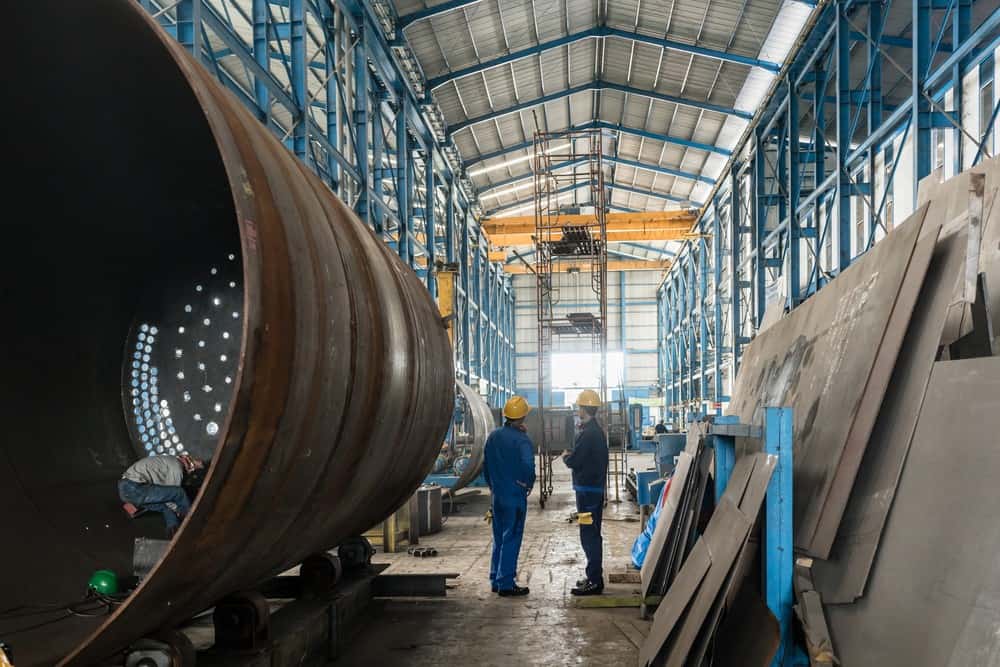When you are designing and fabricating steel that you intend to galvanize, there are a number of important considerations for success of the galvanizing process. Whether you are working with galvanized steel for the first time or for the one-hundredth time, there are some predictable issues you need to discuss with your galvanizer at the beginning of your project.
Steel Chemistry
You should always inform your galvanizer of the grade of steel you have selected for your galvanizing project. The reactivity of your steel makes a huge difference in the outcome of galvanizing.
Trace elements in steel, such as phosphorous and silicon, may result in a coating composed almost entirely of iron-zinc alloys with almost no free zinc layer. This affects the future resistance of your steel to environmental stress. Galvanized coatings on common steel are typically shinier than coatings on steel with trace impurities, although both kinds of steel are protected by the galvanizing process.
Additionally, chemistries for steels with tensile strength of 150 ksi (1100 MPa) may be affected by hydrogen embrittlement in the galvanizing process. Designers and fabricators should discuss their specific needs when this steel is to be placed in a critical application.
Surface Preparation
The galvanizing industry has professional standards for the preparation of surfaces of steel to be galvanized. ASTM A143/A143M, A384/A384M, and A385/A385M address surface preparation for galvanizing. Steel is sent through a degreasing bath to remove grease, oil, and dirt. Next, it is pickled to remove rust and mill scale prior to the galvanizing process. Your steel pieces may be immersed in a liquid flux solution (usually a mixture of zinc ammonium chloride and water) to remove remaining oxides on the surface and to prevent further oxidation Your communication with the galvanizer will ensure that any unusual surface contaminants may be removed in this part of the galvanizing process.
Size and shape
Before you contract a galvanizing job with your galvanizing facility, you need to be sure that their vats can accommodate your steel’s size and shape. Most galvanizing facilities can accommodate steel pieces up to 42 feet (13 meters) in length, and some galvanizers have kettles between 50 and 80 feet (15 and 25 meters) long.
Ventilation
Lowering steel into molten zinc produces air bubbles. When a piece of steel is lowered into the vat flat side up, air bubbles can accumulate under its upper surface. These air bubbles prevent full contact of zinc and steel. Engineers understandably object to unnecessary hole in their steel, but ventilation holes may be necessary to ensure full coverage with zinc. The closer the holes are drilled to the top surface of the steel part, the better will be contact of steel and zinc. Engineers will want to discuss need for ventilation with the galvanizing facility when they place their order.
Welding
Welding flux has to be removed before steel can be galvanized. There is a lot fabricators can do to minimize problems with welding in the galvanizing process:
- Uncoated electrodes minimize the production of flux on steel.
- Welding with a coated electrode will produce uneven surfaces that cause voids in the galvanized coating of the steel. All flux from welding with a coated electrode must be removed with a steel brush, with a pneumatic needle gun, with an abrasive cleaner, or by chipping and grinding prior to the galvanizing process.
- Galvanizers recommend that welders use processes such as tungsten inert gas (TIG), metal inert gas (MIG), or a carbon dioxide (CO2) shielded process because they produce no slag. Even with these processes, the steel will need to be brushed off.
- The welding rod should be as close as possible to the material being welded to prevent problems with chemical reactions and during and after the galvanizing process.
Threaded parts and connections
Bolted assemblies should be sent to the galvanizer in a disassembled condition. Any nuts, bolts, or studs to be galvanized should be sent separately from their assembly.
Post-galvanizing expectations
It’s always best to come to a meeting of the minds with your galvanizers about reasonable expectations for time to first maintenance and the long-term appearance of your galvanized steel. Good communications among designers, fabricators, and galvanizers can lower costs and reduce turn-around time.

